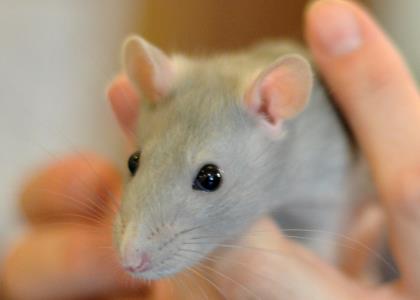What An “Average” State Shows us About Sheltering in the U.S.

Tsubuki, one of the little critters available for adoption at the Upper Peninsula Animal Welfare Shelter. UPAWS has made Marquette, MI, a No Kill community.
Michigan’s 2014 statistics were released yesterday for reporting shelters. In many communities, lifesaving is up, up, up. There are new communities saving 95% or better of the animals and a fair number of cities saving 97%, 98%, even 99%.
Chippewa County, for example, saved 98% of dogs and 98% of cats in 2014 and adopted out the one pig who ended up at the shelter. As I have said before, pigs are people, too. Midland County saved 99% of dogs and 98% of cats. Alger County saved 100% of dogs and 99% of cats. The Upper Peninsula Animal Welfare Shelter (UPAWS) which serves Marquette is one of the shelters highlighted in my documentary film, Redemption, about the No Kill revolution in America. It saved 100% of rabbits, 100% of guinea pigs, 98% of dogs, 98% of cats, and 94% of “pocket pets.”
Tragically, some “shelters” don’t deserve the name. Detroit Animal Control killed over 70% of all dogs and cats and the majority of other species. Kalamazoo County Animal Services killed more cats than they took in: taking in 1,378 and killing 1,391. They certainly do not, as their name falsely implies, provide any real “services” to cats or the people who love them.
Like other aspects of American society, shelters in Michigan are broken down into camps: the “haves” and “have nots” and some in the middle. But the difference between those succeeding and those that are failing isn’t about money; it is about their commitment to saving lives. Those that want to are saving animals in record numbers. Those that don’t are killing. Many are just “average” shelters killing an “average” number of animals, which is, given the still low industry standard, a lot of animals (compared to the best performing shelters, though admittedly better than it has been historically). How to change that? And what would it take?
Michigan shelters are saving about 6.5 of every 10 animals. They need to save three more to end the killing of healthy and treatable animals. By implementing the programs and services of the No Kill Equation, they would be able to increase reclaims, save “feral” cats, and reduce impounds by keeping animals with their responsible caretakers. Then they can focus on adopting out the remainder. How many more? They just need to reach less than 1/2 of 1% of Michigan residents. It is theirs for the taking.
For those shelters that do not want to change, the same way every social movement in American history has and does: 1. Advocacy 2. Legislation 3. Litigation.
Some other items of note:
- None of the reporting shelters sold live animals for research. (The practice of shelters doing so should be banned nationwide.)
- The vast majority of reporting shelters do not seem to provide any sheltering services to rabbits, guinea pigs, ferrets, and other non-dog/cat species. Only 36 of the 132 reporting agencies (27%) took in any animals besides dogs and cats and many of those only took in one or a few. It is worth noting that when you look at the overall numbers killed, perhaps the rabbits and others are the unwitting lucky ones. The reporting shelters killed 17,950 dogs and 24,623 cats, compared to 706 non-dog/cat species. We need to first reform shelters to make them the save havens they should and can be. Of course, while I have long maintained that “shelters” should not take in animals if all they are going to do is kill them, that need not be the choice.
In the next few days, Michigan should also report totals, including the percentage of shelters which reported as the overall number of reports is down (somewhere in the neighborhood of 66% of shelters by my back of the envelope calculations). About 132 agencies reported, which is less than the roughly 165 or so that reported in years past and represented about 83-84% of the total. When the comprehensive tally comes out, it will give us a better grasp of what progress Michigan has made, how many animals are still losing their lives, and what it would take to end the killing altogether.
In the meantime, here are the rough/preliminary numbers I came up with based on what was already released: Michigan’s reporting agencies took in about 58,550 dogs and killed 17,950, a save rate of 70%. They took in 63,706 cats and killed 24,623, a save rate of 61%. They took in 2,400 other animals and killed 706, a save rate of 70%. Overall, the save rate was 65%, about the national average.
The data for individual communities will be crunched and updated to saving90.org and will include not just dogs and cats, but all animals who entered the shelters because ferrets, pigs, rabbits, and other animals matter, too.
————-
Have a comment? Join the discussion by clicking here.